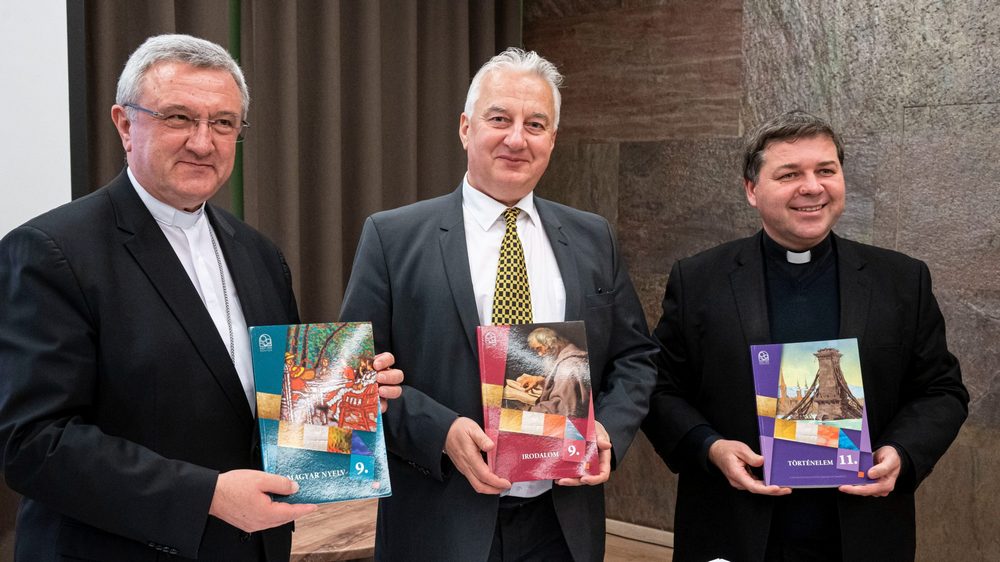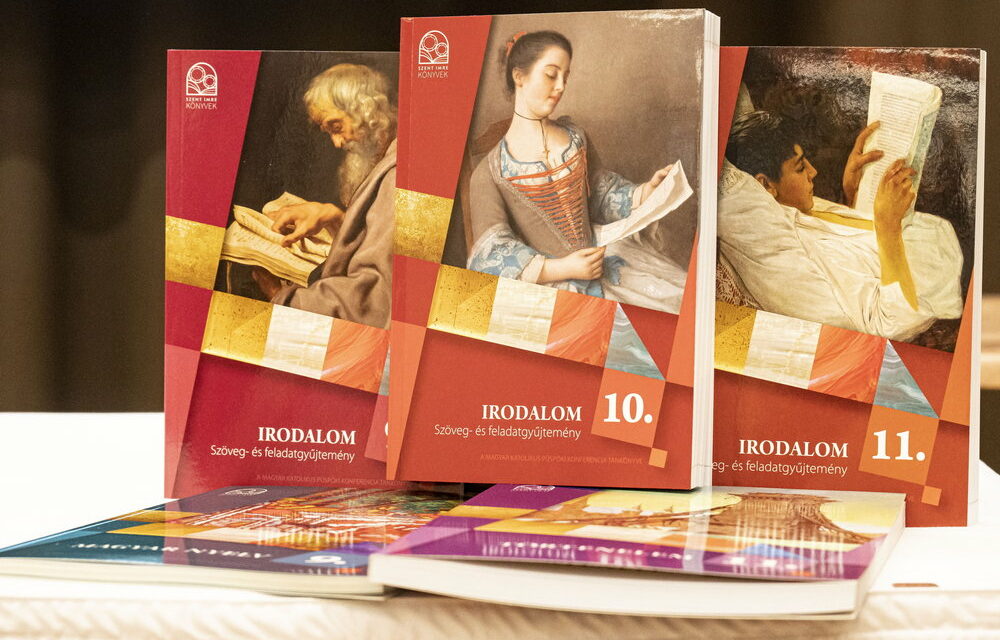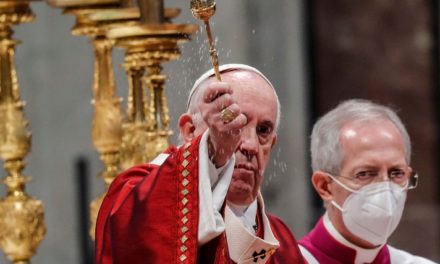Publishing the Catholic textbook family is a chapter in the realization of religious freedom, said Deputy Prime Minister Zsolt Semjén at the presentation of the Szent Imre textbook family in Budapest on Monday. With the textbook family, not only Catholic, but the entire public education was significantly strengthened.
Zsolt Semjén emphasized: the mission of the church is salvation and the service of the whole person, and it follows from this service that it takes over public tasks from the state, for example in health care, the social sphere or education.
And the state "recognizes and acknowledges" this service and, on the basis of "citizen equality of rights", finances the institutions that take on the church's public task in the same way as the state institutions that perform a similar task. He added: if the state did not do this, it would not only differentiate between state and church institutions, but between children and children, patients and patients, social workers and social workers.
Zsolt Semjén emphasized:
in fact, it is not the government that wants to transfer certain state institutions to church maintenance, but the citizens decide to enroll their children in church institutions.
Accepting this decision, the state, on the one hand, finances these institutions in the same way as its own, and on the other hand ensures the freedom of the church.
Ensuring the freedom of the church in public education means that, while expecting the fulfillment of the conditions necessary for state recognition, it ensures the necessary means and the autonomy and freedom for the specific spiritual mission and spiritual reality of the church.
And everything must be reflected in the textbooks. The church itself can determine what is the specific spirituality that should be reflected in these textbooks. That is why religious freedom is realized in these books, he declared.
András Veres, the president of the Hungarian Catholic Bishops' Conference (MKPK), recalled: in 2018, the Catholic Pedagogical Institute operating under the support of the MKPK began curriculum development, as a result of which the first volumes of the Catholic general knowledge textbook family could be published in 2021 - after a 76-year hiatus - at Szent István Published by the company.
András Veres highlighted:
is convinced that with the textbook family, not only Catholic, but the entire public education has been significantly strengthened.
He went on to say that the greatest recognition of the textbook family is that in 2021, schools ordered more than 40,000 of the 9th and 10th grade textbooks published at the time, and more than 100,000 students are already learning from these books this school year.
In addition to the paper-based textbooks, the development of a digital Catholic textbook library has also begun, where, in addition to the smart textbook versions of the textbooks, teacher's aids, Catholic religious textbooks and a digital classroom are also available. Almost 200 schools have already registered for the website www.kattan.hu , which will be available from the fall of 2021,
András Veres thanked the Hungarian government for the support for the publication of the textbook family, which was provided through the Gábor Bethlen Fund Manager's tender.
Örs Kovács, the editor-in-chief of the history textbooks, indicated that the new history textbook series is a "tolerant and open" book. It is Catholic not only because it displays religious and church history topics in more detail, but in some cases it also provides space for historical confrontation.
He also said that they tried to approach the difficult questions from several directions and give the students the opportunity to form their opinions through the resources and tasks given to them. He added: the textbook does not want to show new things in its structure, but rather in its content and methodology, and its aim is to help independent learning when processing the lessons.
Judit Pásztor Sályiné, the editor-in-chief of the literature textbooks, spoke about the fact that the Christian spirit in the textbooks appears in the approach to the works prescribed in the curriculum and in the surplus compared to the standard material.
The Bible and medieval literature are discussed in detail in the Catholic literature textbook, confessional literature appears in it, Hungarian priest poets are discussed and French Catholic literature of the 20th century is also discussed.

Deputy Prime Minister Zsolt Semjén, András Veres, president of the Hungarian Catholic Bishops' Conference (MKPK) and Tamás Tóth, secretary of the MKPK, at the presentation of the Saint Imre textbook family at the D50 Cultural Center in Budapest (Photo: MTI/Zsolt Szigetváry)
András Valaczka, the editor-in-chief of the Hungarian language textbook, said that an important aspect when creating the textbook was the realization that they had to teach not only grammar, but the Hungarian language itself. That is why, more than any other curriculum, the books contain tasks that encourage children, who in today's chat world "do business with 13 words", to take possession of their mother tongue in a deeper and more complete way.
Another basic proposition of the book is that "we teach to think with language".
The Hungarian language is the place where children should marvel at their own intellectual functioning and understand that, according to the idea of "spokenness", words are actually actions, he said, noting that in today's world most crimes are committed with words.
According to the press material distributed at the presentation, the now 9-12. The Szent István Society publishes history, Hungarian language and literature textbooks and their corresponding text collections for students in high schools, vocational high schools and technical schools.
Textbooks can be ordered by institutions of any kind from the 2022 textbook list through Kello, but their use is not mandatory for Catholic institutions either. The presentation was also attended by Miklós Soltész, the Prime Minister's State Secretary responsible for church and ethnic relations.
Source: MTI
Cover image: Photo: MTI/Zsolt Szigetváry












